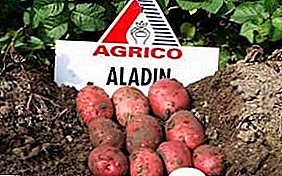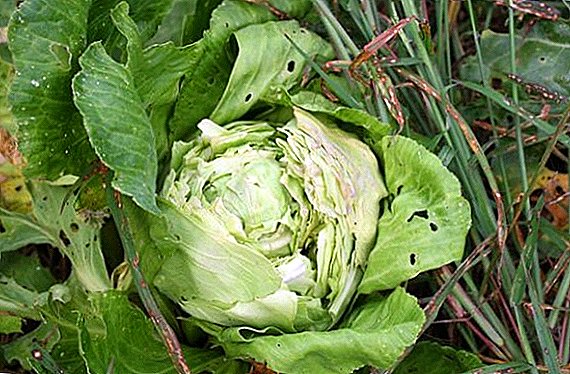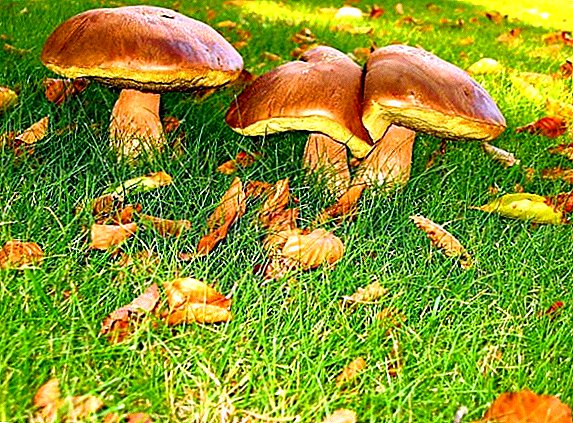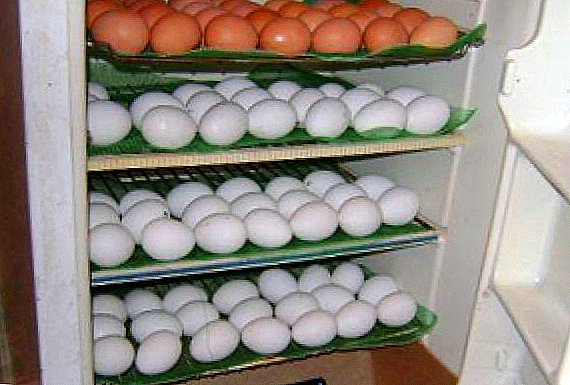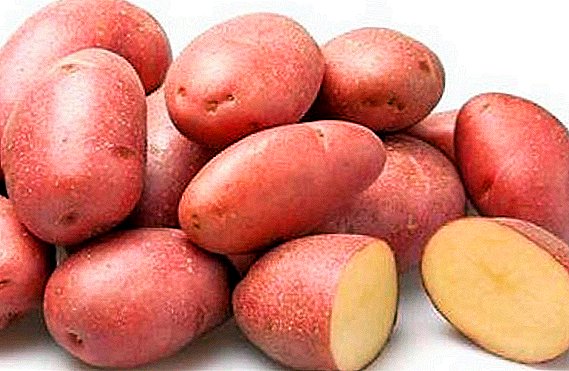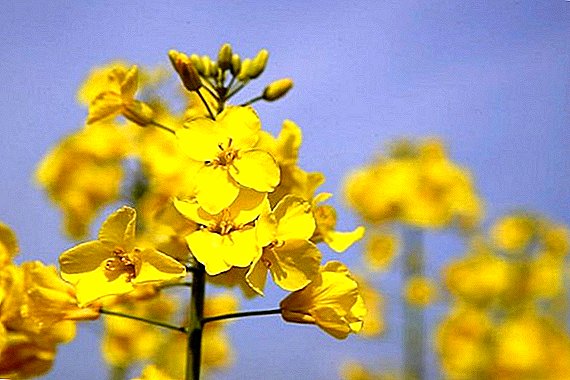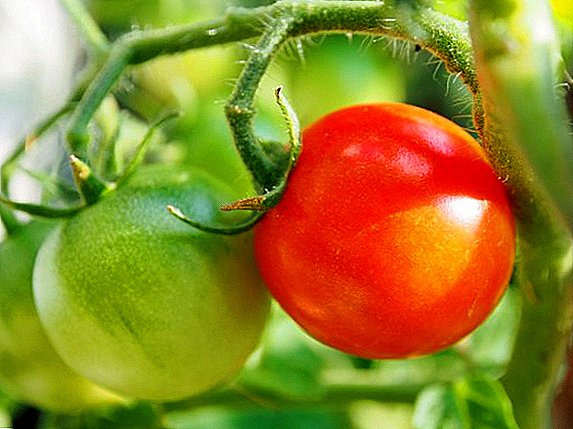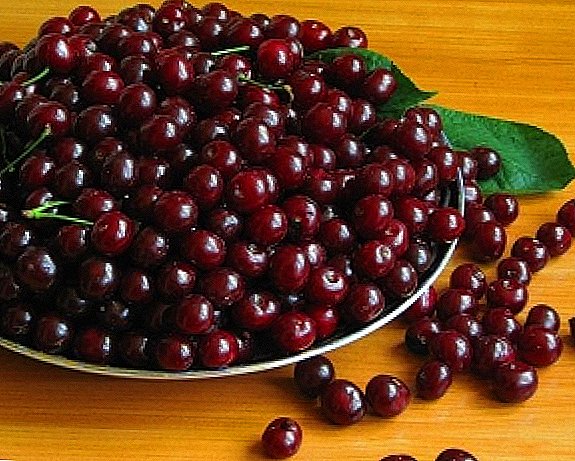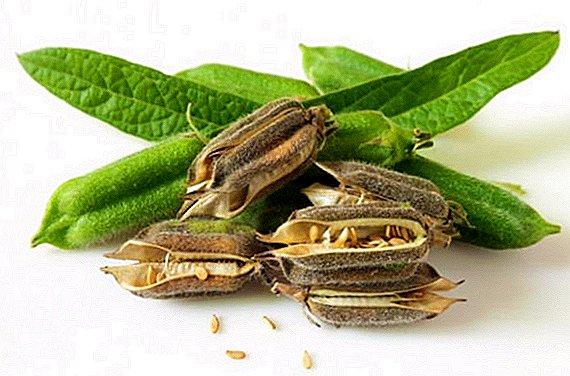 Modern man knows sesame well - fragrant seeds, which so deliciously decorate a bun and are used in various dishes of cooking. But not every person knows what the plant itself looks like, where it came from and whether it is possible to grow it on its own plot. We will tell about this in this article.
Modern man knows sesame well - fragrant seeds, which so deliciously decorate a bun and are used in various dishes of cooking. But not every person knows what the plant itself looks like, where it came from and whether it is possible to grow it on its own plot. We will tell about this in this article.
Annual sesame herb: description
The plant has long been used for various purposes by many nations, therefore it has several names:
- Kunjat (Persian);
- sesame (Latin);
- Simsim (Arabic);
- Tyla (Sanskrit);
- Til (Hindi).
Learn about the uses of sesame and sesame oil.

Stems and leaves
Sesame is a herbaceous annual plant, quite tall (can reach 3 meters). Stem - upright and branched. Its surface is covered with glandular hairs.
Color green or anthocyanin. The number of side branches can be from 3 to 15 pieces. The leaves have a thin and long light green color.
Flowers and fruits
Flowers grow directly from the sinuses and bloom only one day. Their color can be white, pink or lilac. Immediately after the flower fades, an oblong green box-pod begins to form. In it ripen sesame seeds. Their color can be white, yellow, red and black.
Did you know? Oil produced from sesame seeds retains its many beneficial properties over 9 years.

Natural habitat: where sesame grows
Sesame is a heat-loving and light-loving crops and lives in tropical and subtropical climatic zones. Initially, the culture was grown in countries such as North Africa, India, Pakistan, Arabia. Later, culture reached Central and Southeast Asia, as well as the Caucasus.
In these regions, the plant is particularly popular and is used in a variety of dishes. A special place among the possible uses is tahina - Sesame paste.
Learn how to grow lemon, feijoa, passiflora, actinidia, dates, pomegranates, annons, rambutan, calamondin, anguria, asimina, kivano, luffa, pitahaya, mango, papaya, pineapple, zizifus.
Is it possible to grow in the country?
Depending on the climate in which you live, you can assess the chances for a favorable outcome of sesame sowing. In the southern regions, the plant has already been developed and is quite well grown.
But more northern latitudes still can not boast of serious results. The plant is being developed in this climate, but rather slowly and uncertainly. Therefore, many believe that the game is not worth the candle and it is better to grow a plant where it feels comfortable.  In any case, wherever you decide to try to grow sesame, you should adhere to certain rules, because the plant is very whimsical to environmental conditions.
In any case, wherever you decide to try to grow sesame, you should adhere to certain rules, because the plant is very whimsical to environmental conditions.
Conditions for growing sesame
To plant sesame, you need to select or create specific conditions. Without their observance to grow a full-fledged plant, most likely, will not work.
Climate and temperature
Preferred tropical or subtropical climate. Temperature drops and especially frosts can cause irreparable damage to the plant or even ruin it. If the temperature drops during flowering, it will inevitably lead to a decrease in the quantity of the crop and a deterioration in its quality.
Find out what types of soil exist, how to fertilize different soils.
Growing soil
Especially capricious sesame against the soil. Best of all it suits loamy soil. It must be fertile and well drained. Excessive moisture is not allowed, and the presence of even a light crust on the surface of the soil can prevent the seeds from rising. 
Did you know? Assyrian myths say that before the creation of the world the gods drank nectar from sesame.
Sesame Seed Planting Scheme
If you decide to experiment and check whether sesame will grow on your site, then you should follow the instructions for preparing for planting.
Selection and preparation of seeds
The final yield depends on the quality of the material for sowing:
- the seeds must be healthy, pure, dense, full-bodied and with high germination. It is advisable to buy them in verified places from reputable sellers and familiar brands of seed producers;
- Before planting, seeds can be treated with products containing a fungicide. This procedure will protect them from many diseases and pests;
- Some experts advise soaking the seeds a day before sowing in ordinary water.

Terms and plan of sowing
Sesame can be sown when the soil at a depth of 5-8 cm is warmed up to +17 ° С. More favorable is the temperature of about + 27 ° C. For maximum results, you should follow the rules of sowing:
- sowing sesame is necessary in a wide-row way, the aisles should be 45-70 cm;
- seeds are placed in the ground at a depth of 2-3 cm;
- at the time of sowing the soil should be wet, loose and free of weeds;
- it is better for the plant if the soil is pre-fertilized with potassium chloride, ammonium nitrate and superphosphate;
- just before sowing, the ground should be well filled with water;
- in case of frost threat, crops should be covered with polyethylene.
Some maintain seeds in the ground on the window until the risk of frost has passed, and only then they are planted in open soil.
Important! It is not recommended to sow sesame on the place where it was grown before, or after the sunflower. The best precursors for this plant are legumes, spring barley and winter crops.
Do I need care for the culture?
Under favorable conditions, the crops sprout for 4-5 days. In order for young sprouts to strengthen and grow into full-fledged plants, you need to take the necessary care:
- prevent the formation of crusts on the ground, especially until sprout shoots;
- when the shoots are clearly visible, they must be thinned out. The distance between them must be at least 6 cm;
- in the process of sesame growth, it is necessary to make regular weeding, loosening and watering.
 Sesame needs to be systematically loosened and thinned.
Sesame needs to be systematically loosened and thinned.Learn how to grow cilantro, parsley, dill, lovage, mint, fennel, thyme, oregano, laurel, anise, rosemary, monardo, basil.
When and how to harvest
Willingness yield can be determined by such external indicators:
- the plant begins to turn yellow;
- lower leaves gradually dry out;
- seeds get the desired color depending on the variety.
 Collecting still greenish shoots and finishing them under a canopy.
Collecting still greenish shoots and finishing them under a canopy.Slightly wet boxes should be torn off completely and let them dry completely in the room (spread out on a cloth or paper in a well-ventilated and warm place). After that, you need to put the entire harvest in a canvas bag and gently crush your fingers.
The contents of the bag should be sifted in the wind or through a sieve so that the seeds are separated from the husk.  Checking ripened sesame seeds
Checking ripened sesame seeds
Important! Keep the seeds in tightly closed glass or cans, preventing moisture from entering.
Having shown a little patience and attention (and if climatic conditions allow), it is quite possible to grow your own sesame. These are very useful seeds that can be used for culinary, medical and cosmetic purposes. And since the product will be your production, then you will be sure of its quality.
Video: growing sesame in Transnistria
Sesame growing experience: reviews





